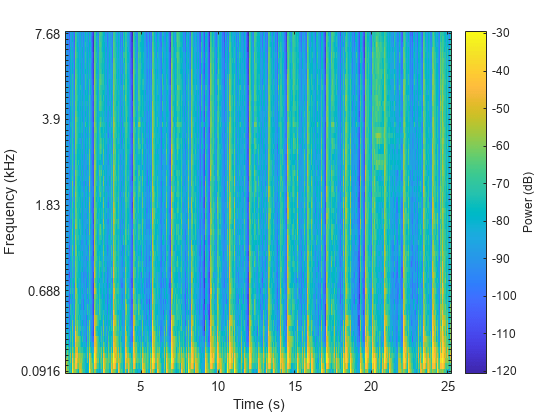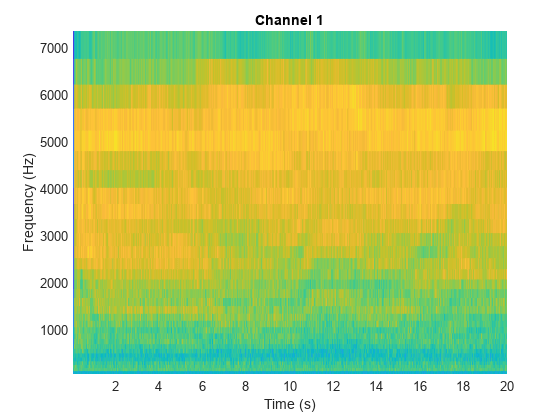melSpectrogram
Mel spectrogram
Syntax
Description
S = melSpectrogram(audioIn,fs,Name=Value)
melSpectrogram(___) plots the mel spectrogram on a
surface in the current figure.
Examples
Input Arguments
Name-Value Arguments
Output Arguments
Algorithms
References
[1] Rabiner, Lawrence R., and Ronald W. Schafer. Theory and Applications of Digital Speech Processing. Upper Saddle River, NJ: Pearson, 2010.
[2] O'Shaughnessy, Douglas. Speech Communication: Human and Machine. Reading, MA: Addison-Wesley Publishing Company, 1987.
[3] Slaney, Malcolm. "Auditory Toolbox: A MATLAB Toolbox for Auditory Modeling Work." Technical Report, Version 2, Interval Research Corporation, 1998.
Extended Capabilities
Version History
Introduced in R2019aSee Also
spectrogram | mfcc | gtcc | mdct | audioFeatureExtractor







